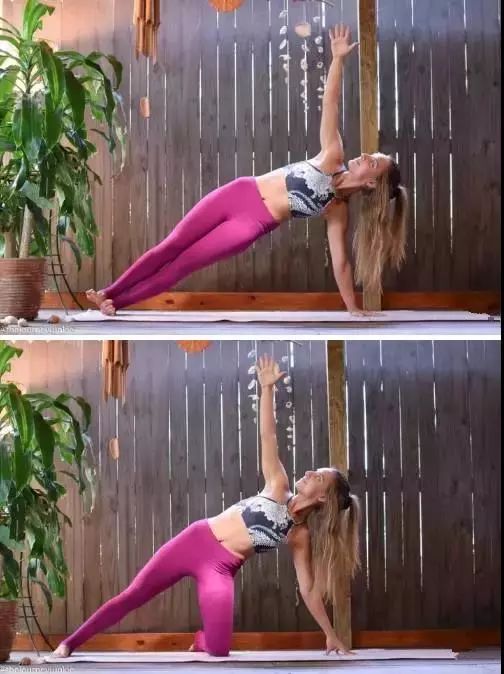How to face the problems in yoga practice? For example, when doing forward bending and back stretching, I feel that the back of my thigh is tearing, and the back of my whole body is uncomfortable to the extreme
. 
Do you follow the teacher’s command to continue to extend and fight? Or steal lazy, slightly bend your knees to complete the password
. 
In fact, sometimes, kneeling is the panacea to save the novices
. 
It’s everyone’s responsibility to protect the body from injury
. 
Adjusting posture is a common method in yoga practice
. 
When an individual posture makes your body feel uncomfortable or not suitable for you to practice, you need to make some adjustments to make your practice more smooth and comfortable
. 
The following yoga people’s small series is the adjustment and modification of seven common yoga postures, which will make your practice more in-depth and protect your body from injury“ 1
.
Stand or sit and bend forward “(the model is not standard) to avoid knee hyperextension, it should be clear that the degree of bending varies from person to person
.
Different postures allow deeper or softer bending, you choose“ Now that you have mastered the art of kneeling, let’s learn how to use it when we practice
.
Most people who start Yoga lack strength, especially women
.
When lack of upper limb strength to do Flow Yoga sequence, it will hurt the body
.
To avoid physical injury, it is recommended that you bend your knees slightly“ 3
.
Four pillars another popular yoga transitional form is from plank to four pillars
.
Plate, let the knee slightly bend to the ground
.
Lean forward with your shoulders over your wrists
.
Bend your elbows as you exhale and lower to the ground, keeping your elbows on both sides of your ribs
.
When the body, knees, chest and chin are all on the ground
.
This is a beautiful variant, no matter what your level, we strongly recommend you try it“ 4
.
Cobra and upper dog “upper dog” is a traditional posture, which uses a lot of core, arm and upper body strength
.
To train back strength and practice upper dog style, it is recommended to practice Cobra first
.
Don’t underestimate the power of this pose
.
It’s good for strength and flexibility, so don’t exceed it! Follow these tips to practice Cobra safely: prone, legs together on the mat, big toes touching
.
Put your hands on both sides of your ribs
.
Tighten your legs and lift your knees off the ground
.
Turn your feet back and tighten your abdomen
.
As you inhale, lift your chest off the mat
.
Melt your chest down as you exhale
.
Repeat a few times, inhale, lift, breathe and melt“ 5
.
The complete performance of the “side plate” posture requires a lot of strength, with the focus on balance
.
Once connected, the asana takes place effortlessly
.
While building strength and balance, it is recommended that you put your knees down
.
These two variants, the hand under the shoulder, from top to bottom of the force
.
For a more complete exercise, raise your hips to the sky
.
Stack your feet and hook them back to help balance and stabilize
.
For the knee drop change, you can put the hips on the knees and keep the long legs’ feet on the ground
.
In both changes, focus on the opening of the clavicle and heart“ 6
.
The low starting position and the high starting position are often practiced in class
.
Both versions have the following advantages: strengthening the muscles of the limbs and buttocks
.
Stretch the psoas and hips
.
Expand the lungs, chest and shoulders
.
Develop thigh endurance
.
Improve the stability of the peace core“ 7
.
Lead and pigeon Yoga_ In) dove is a special pose that helps increase flexibility, open hip flexors and gyrators, and relieve lower back and sciatica
.
Important points to remember: always keep your feet hooked back to protect your knees
.
In complete pigeons, it is recommended to lower the hip flexors first, so that tension can be relieved when the hips are open
.
Keep the back of the neck extended, the shoulders relaxed, away from the ears, the knees of the arms close to the chest, and the knees close to the chest with the strength of the arms..
.


